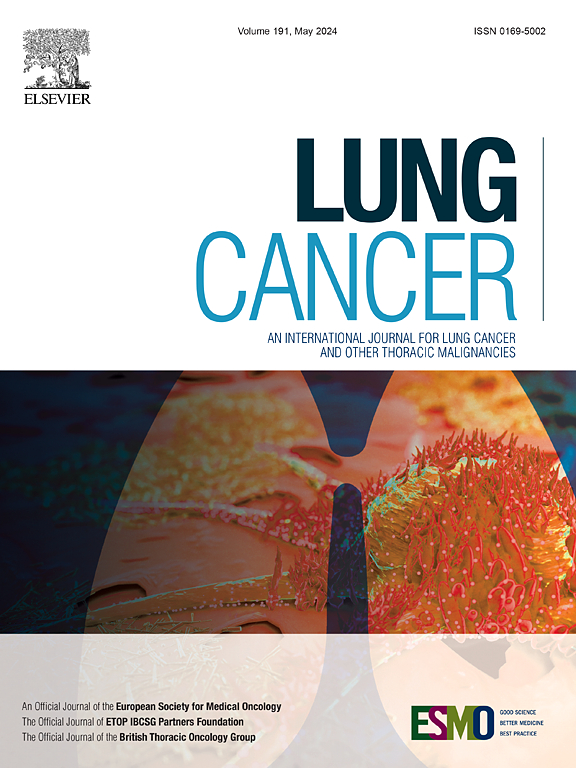Histological and genetic features and therapeutic responses of lung cancers explored via the global analysis of their metabolome profile
IF 4.5
2区 医学
Q1 ONCOLOGY
引用次数: 0
Abstract
Background
Lung cancer is the deadliest disease globally, with more than 120,000 diagnosed cases and more than 75,000 deaths annually in Japan. Several treatment options for advanced lung cancer are available, and the discovery of biomarkers will be useful for personalized medicine. Using metabolome analysis, we aimed to identify biomarkers for diagnosis and treatment response by examining the changes in metabolites associated with lung cancer progression.
Methods
Plasma samples from patients with recurrent or metastatic non-small cell lung carcinomas diagnosed at Tohoku University Hospital between 2019 and 2024 were used in this study. Metabolomic analysis was performed using the Biocrates Life Sciences MxP Quant 500 kit. Multivariate, principal component, and orthogonal partial least squares discriminant analyses were performed.
Results
The triglyceride and phosphatidylcholine concentrations were higher in the patients with early than in those with advanced lung adenocarcinomas. However, the cholesterol ester concentrations were higher for the patients with advanced lung cancer. The concentrations of hexosylceramide were higher in patients with early lung adenocarcinoma than in those with squamous cell carcinoma. Relative to epidermal growth factor receptor (EGFR)-mutation negative cases, the EGFR-mutation positive cases showed marked differences between the ceramide and triglyceride concentrations. For the best therapeutic effect of EGFR-TKI treatment, the hexosylceramide (HexCer) (d18:1/24:0), ceramide (Cer) (d18:2/22:0), and ceramide (Cer) (d18:2/24:0) concentrations were higher for the stable and progressive disease groups. The concentrations of phosphatidylcholine (PC) ae C42:2, sphingomyelin (SM) C24:1, and lysophosphatidylcholine (lysoPC) a C18:2 were higher in the partial response group treated with immune checkpoint inhibitors and chemotherapy.
Conclusion
Metabolomic analysis may be useful for the diagnosis and treatment of lung cancer and may provide clues for new therapeutic strategies. PC ae C42:2, SM C24:1, and lysoPC a C18:2 can serve as predictive biomarkers for monitoring the therapeutic effects of the combination of immune checkpoint inhibitors and chemotherapy.
求助全文
约1分钟内获得全文
求助全文
来源期刊

Lung Cancer
医学-呼吸系统
CiteScore
9.40
自引率
3.80%
发文量
407
审稿时长
25 days
期刊介绍:
Lung Cancer is an international publication covering the clinical, translational and basic science of malignancies of the lung and chest region.Original research articles, early reports, review articles, editorials and correspondence covering the prevention, epidemiology and etiology, basic biology, pathology, clinical assessment, surgery, chemotherapy, radiotherapy, combined treatment modalities, other treatment modalities and outcomes of lung cancer are welcome.
 求助内容:
求助内容: 应助结果提醒方式:
应助结果提醒方式:


